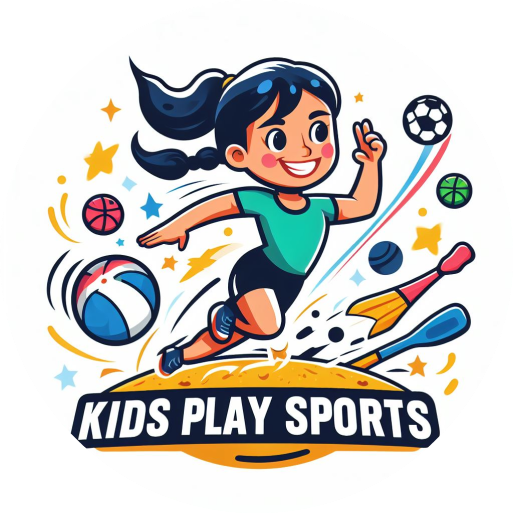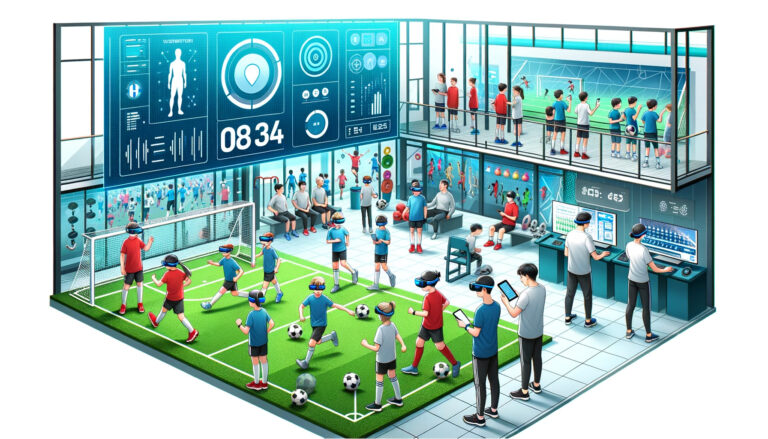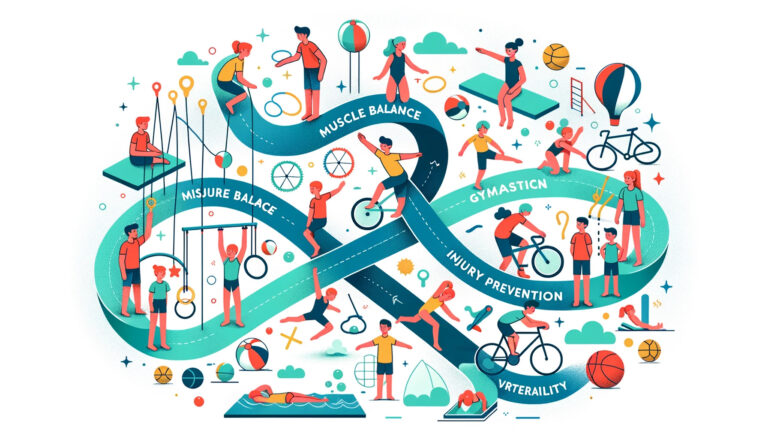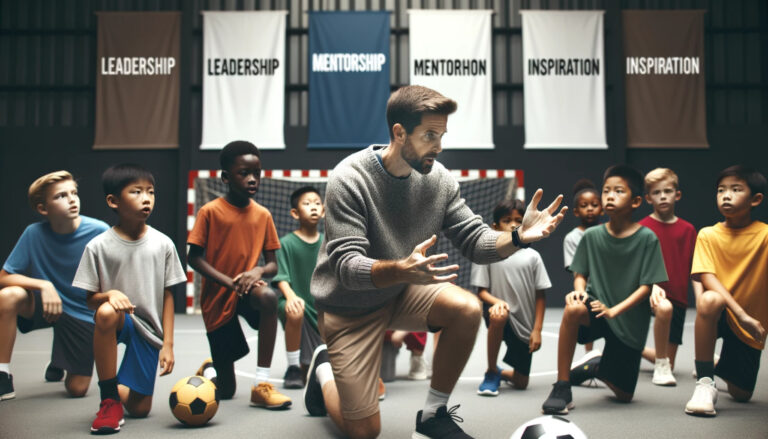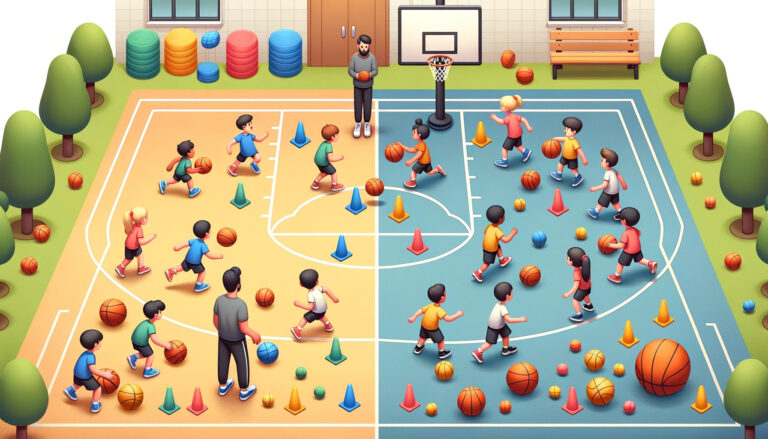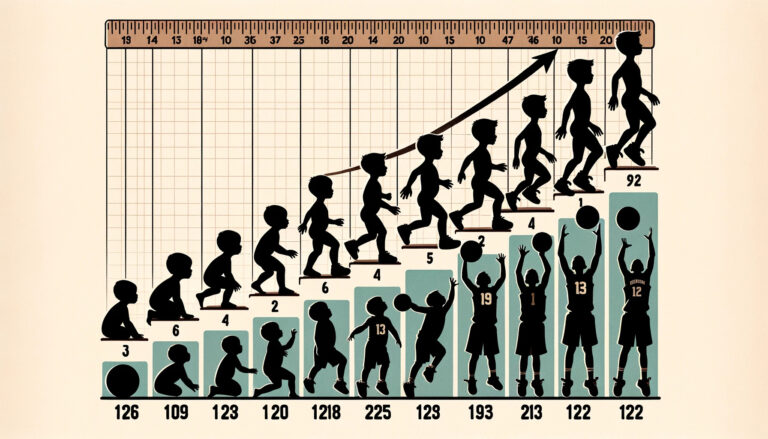Adaptive Sports Training for Children with Disabilities
- The Importance of Rest and Recovery in Young Athletes’ Regimens - October 23, 2023
- Boosting Stamina and Endurance in Young Athletes: Tips and Tricks - October 23, 2023
- The Role of Coaches in Shaping Young Athletes - October 23, 2023
Understanding the Benefits of Adaptive Sports for Children with Disabilities
Adaptive sports offer numerous benefits for children with disabilities. First and foremost, participating in these sports can significantly improve physical fitness and motor skills. Engaging in activities like wheelchair basketball, swimming, or cycling can enhance strength, endurance, and coordination. This, in turn, can lead to increased independence and a higher quality of life for children with disabilities.
Furthermore, adaptive sports provide an opportunity for social interaction and emotional well-being. By participating in these activities, children with disabilities can break down barriers and feel a sense of belonging. They can connect with other individuals who face similar challenges and build a supportive community. This social interaction not only improves self-esteem but also fosters friendships and a sense of inclusion. Overall, adaptive sports have a transformative impact on the lives of children with disabilities, enhancing their physical and emotional well-being.
Exploring Different Types of Adaptive Sports for Children with Disabilities
Adaptive sports offer a wide range of opportunities for children with disabilities to engage in physical activity and experience the joy of participating in organized sports. There are various types of adaptive sports that cater to different abilities and interests.
One popular type of adaptive sport is wheelchair basketball. This fast-paced game allows children with mobility impairments to compete on an even playing field. By utilizing specially designed sport wheelchairs, players are able to maneuver quickly and participate in the game with agility and skill. Wheelchair basketball not only enhances physical fitness, but also promotes teamwork, strategy, and communication skills among players.
Another exciting option for children with disabilities is adaptive skiing. Whether it’s downhill skiing or cross-country skiing, adaptive equipment and techniques make it possible for individuals with limited mobility or balance issues to enjoy the thrill of gliding down the slopes. Specially designed sit-skis and outriggers provide stability and control, allowing children to experience the freedom and exhilaration of skiing in a safe and supported manner. Adaptive skiing not only builds strength and coordination, but also boosts self-confidence and fosters a sense of achievement.
How to Choose the Right Adaptive Sports Program for Your Child
First and foremost, when choosing the right adaptive sports program for your child, it is essential to consider their specific needs and abilities. Each child is unique, and their disability may require a particular focus or specialized training. Therefore, it is crucial to research and identify programs that offer the necessary support and resources tailored to your child’s needs. Seeking recommendations from healthcare professionals, therapists, or other parents of children with disabilities can provide valuable insights and help you make an informed decision.
Additionally, take into account the availability and accessibility of the program. Consider factors such as location, transportation options, and scheduling to ensure that the chosen program aligns with your child’s and family’s lifestyle and commitments. It is essential to find a program that is convenient and feasible to attend regularly, as consistent practice and participation are vital for your child’s progress and development.
The Importance of Proper Training and Coaching in Adaptive Sports
Proper training and coaching play a crucial role in the successful participation of children with disabilities in adaptive sports. It is essential for coaches to have a comprehensive understanding of the specific needs and abilities of each participant. With this knowledge, they can design tailored training programs that address individual challenges and promote growth. Effective coaching also involves providing clear instructions, demonstrating proper techniques, and offering constructive feedback to help children improve their skills and confidence.
In adaptive sports, where participants may have various disabilities, coaches must be well-versed in the specific adaptations required for each sport. They must be knowledgeable about adaptive equipment, modifications, and techniques that can enhance the participation and performance of children with disabilities. By creating a supportive and inclusive environment, coaches can foster a sense of belonging and encourage children to push their physical boundaries. With proper training and coaching, children with disabilities can develop their abilities, build resilience, and experience the joy of participating in adaptive sports.
Addressing Common Concerns and Misconceptions about Adaptive Sports Training
One common concern that parents may have about adaptive sports training for children with disabilities is the fear of injury. It is natural for parents to want to protect their children from harm, and engaging in physical activities may seem risky. However, it is important to understand that adaptive sports programs are designed with safety in mind. Coaches and trainers are trained to provide appropriate modifications and support to ensure the safety of the participants. Additionally, adaptive sports programs often incorporate proper warm-up exercises and techniques to reduce the risk of injury. By addressing concerns about safety and providing the necessary precautions, parents can feel more confident in allowing their children to participate in adaptive sports training.
Another misconception that surrounds adaptive sports training is that it may be too physically demanding or strenuous for children with disabilities. While it is true that adaptive sports require physical stamina, endurance, and strength, the training is tailored to suit each individual’s abilities. Coaches and trainers work closely with participants to develop personalized training plans that take into consideration their specific needs and capabilities. By adapting the activities and exercises to match the child’s abilities, adaptive sports training can provide a safe and achievable journey towards improved physical fitness and overall well-being. It is important for parents and caregivers to understand that adaptive sports training can be both beneficial and enjoyable for children with disabilities, regardless of their physical limitations.
Strategies for Overcoming Challenges in Adaptive Sports Training for Children with Disabilities
Adaptive sports training for children with disabilities can present unique challenges that require thoughtful strategies for success. One of the most important approaches is individualized coaching and training. Recognizing that every child is different, coaches and trainers must tailor their approach to meet the specific needs and abilities of each athlete. This may involve modifications to equipment, training techniques, or the development of alternative exercises. By personalizing the training experience, children are provided with the necessary support and guidance to overcome any obstacles they may face.
Additionally, fostering a positive and inclusive environment is crucial to overcoming challenges in adaptive sports training. Creating a supportive atmosphere where children feel valued, encouraged, and respected can greatly enhance their motivation and overall experience. Coaches, trainers, and teammates play a vital role in cultivating an atmosphere of inclusivity by promoting teamwork, empathy, and understanding. Furthermore, providing opportunities for social interaction and building strong connections among the participants can help to reduce feelings of isolation and increase the overall enjoyment of the training process.
Building a Supportive Environment for Children with Disabilities in Adaptive Sports
A supportive environment plays a crucial role in the success and overall experience of children with disabilities in adaptive sports. When children feel supported, encouraged, and valued, it boosts their confidence and motivates them to push their limits. One way to build a supportive environment is through inclusive practices that involve children of all abilities. By creating opportunities for interaction and collaboration among participants, children with disabilities can feel a sense of belonging and acceptance within the adaptive sports community. This inclusive approach not only fosters teamwork and camaraderie but also helps break down barriers and misconceptions surrounding disabilities.
In addition to inclusivity, effective communication is essential in creating a supportive environment for children with disabilities in adaptive sports. Coaches, parents, and team members should maintain open lines of communication, ensuring that everyone is well-informed and involved in decision-making processes. It is important to listen to the needs and concerns of children with disabilities and provide them with adequate support and resources. By prioritizing effective communication, misunderstandings can be minimized, conflicts can be resolved promptly, and the overall atmosphere becomes more supportive and understanding.
Enhancing Physical Fitness and Motor Skills through Adaptive Sports Training
Adaptive sports training offers numerous benefits for children with disabilities, particularly in enhancing their physical fitness and motor skills. Through these sports programs, children engage in various activities that improve their cardiovascular health and overall fitness levels. From wheelchair basketball to para swimming, adaptive sports provide a platform for children to engage in fun and challenging physical exercises.
In addition to improving physical fitness, adaptive sports training also focuses on enhancing motor skills among children with disabilities. By participating in activities such as wheelchair racing or seated volleyball, children develop their balance, coordination, and dexterity. These sports require precise movements and the use of specific muscle groups, allowing children to refine their motor skills and gain better control over their bodies. The repetitive nature of adaptive sports training reinforces these skills, resulting in increased proficiency over time.
Promoting Social Interaction and Emotional Well-being in Adaptive Sports Programs
Adaptive sports programs not only provide physical benefits but also promote social interaction and emotional well-being for children with disabilities. Through participation in these programs, children have the opportunity to meet and connect with others who share similar challenges and experiences. This social interaction can greatly enhance their sense of belonging and help reduce feelings of isolation.
In adaptive sports programs, children are encouraged to develop and strengthen their communication and teamwork skills. Whether it’s playing on a team, participating in group activities, or engaging in friendly competition, these programs create a supportive environment where children can build lasting friendships. The shared experiences and camaraderie fostered within these programs not only provide a sense of community but also serve as a source of emotional support for children with disabilities. It helps them develop self-confidence, resilience, and a positive outlook on life, which can have a lasting impact on their overall emotional well-being.
Success Stories: Inspiring Achievements of Children with Disabilities in Adaptive Sports
Section 1:
One remarkable success story in adaptive sports is that of Emily, a 10-year-old girl with cerebral palsy. When she began her adaptive swim lessons, she struggled to even get into the water independently. However, with consistent training and the support of her coaches, Emily made astounding progress. Over time, she developed her swim strokes, gained strength in her arms, and even learned diving techniques. Today, Emily not only competes in local swim meets but also serves as a source of inspiration for other children with disabilities who aspire to excel in adaptive sports.
Section 2:
Another inspiring achievement is the story of Jake, a 13-year-old boy with visual impairments who found his passion in goalball. Initially, Jake faced challenges in adjusting to the fast-paced nature of the game and accurately throwing the ball. Nevertheless, with dedicated coaching and regular practice, he honed his skills and became a key player on his school’s goalball team. Jake’s success not only boosted his self-confidence but also helped remove the misconceptions that children with visual impairments can’t actively participate in team sports. His achievements highlight the transformative power of adaptive sports in empowering children with disabilities to reach their full potential.
